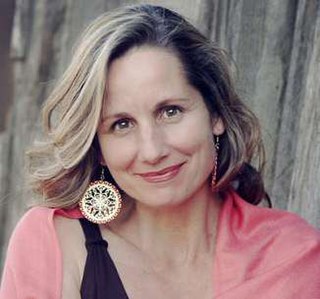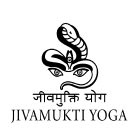
Kundalini yoga derives from kundalini, defined in tantra as energy that lies within the body, frequently at the navel or the base of the spine. In normative tantric systems, kundalini is considered to be dormant until it is activated and channeled upward through the central channel in a process of spiritual perfection. Other schools, such as Kashmir Shaivism, teach that there are multiple kundalini energies in different parts of the body which are active and do not require awakening. Kundalini is believed by adherents to be power associated with the divine feminine, Shakti. Kundalini yoga as a school of yoga is influenced by Shaktism and Tantra schools of Hinduism. It derives its name through a focus on awakening kundalini energy through regular practice of mantra, tantra, yantra, yoga, laya, haṭha, meditation, or even spontaneously (sahaja).

K. Pattabhi Jois was an Indian yoga guru who developed and popularized the flowing style of yoga as exercise known as Ashtanga vinyasa yoga. In 1948, Jois established the Ashtanga Yoga Research Institute in Mysore, India. Pattabhi Jois is one of a short list of Indians instrumental in establishing modern yoga as exercise in the 20th century, along with B. K. S. Iyengar, another pupil of Krishnamacharya in Mysore. Jois sexually abused some of his yoga students by touching inappropriately during adjustments. Sharath Jois has publicly apologised for his grandfather's "improper adjustments".

Jnana yoga, also known as the jnanamarga, is one of the three classical paths (margas) for moksha (liberation) in the Bhagavad Gita, which emphasizes the "path of knowledge", also known as the "path of self-realization". The other two are karma yoga and bhakti yoga. Modern interpretations of Hindu texts have yielded systems, techniques and formulations such as raja yoga and kriya yoga.

Swami Sivananda Saraswati, also called Swami Sivananda, was a yoga guru, a Hindu spiritual teacher, and a proponent of Vedanta. Sivananda was born in Pattamadai, in the Tirunelveli district of modern Tamil Nadu, and was named Kuppuswami. He studied medicine and served in British Malaya as a physician for several years before taking up monasticism.

Satyananda Saraswati, was a Sanyasi, yoga teacher and guru in both his native India and the West. He was a student of Sivananda Saraswati, the founder of the Divine Life Society, and founded the Bihar School of Yoga in 1964. He wrote over 80 books, including the popular 1969 manual Asana Pranayama Mudra Bandha.

Satchidananda Saraswati, born C. K. Ramaswamy Gounder and known as Swami Satchidananda, was an Indian yoga guru and religious teacher, who gained following in the West. He founded his own brand of Integral Yoga, and its Yogaville headquarters in Virginia. He was the author of philosophical and spiritual books and had a core of founding disciples who compiled his translations and updated commentaries on traditional handbooks of yoga such as the Yoga Sutras of Patanjali and the Bhagavad Gita for modern readers.

Baba Hari Dass was an Indian yoga master, silent monk, temple builder, and commentator of Indian scriptural traditions of dharma and moksha. He was classically trained in the Ashtanga of Patanjali, as well as Kriya yoga, Ayurveda, Samkhya, Sri Vidya, Tantra, Vedanta, and Sanskrit.
The following list consists of notable concepts that are derived from Hindu culture and associated cultures’ traditions, which are expressed as words in Sanskrit or other Indic languages and Dravidian languages. The main purpose of this list is to disambiguate multiple spellings, to make note of spellings no longer in use for these concepts, to define the concept in one or two lines, to make it easy for one to find and pin down specific concepts, and to provide a guide to unique concepts of Hinduism all in one place.

Dhyāna in Hinduism means contemplation and meditation. Dhyana is taken up in Yoga practices, and is a means to samadhi and self-knowledge.

Vishnudevananda Saraswati was an Indian yoga guru known for his teaching of asanas, a disciple of Sivananda Saraswati, and founder of the International Sivananda Yoga Vedanta Centres and Ashrams (ISYVC). He established the Sivananda Yoga Teachers' Training Course, possibly the first yoga teacher training programs in the West. His books The Complete Illustrated Book of Yoga (1960) and Meditation and Mantras (1978) established him as an authority on Hatha and Raja yoga. Vishnudevananda was a peace activist who rode in several "peace flights" over places of conflict, including the Berlin Wall prior to German reunification.

Sivananda Yoga is a spiritual yoga system founded by Vishnudevananda; it includes the use of asanas but is not limited to them as in systems of yoga as exercise. He named this system, as well as the international Sivananda Yoga Vedanta Centres organization responsible for propagating its teachings, after his guru, Sivananda with the mission 'to spread the teachings of yoga and the message of world peace' which has since been refined to 'practice and teach the ancient yogic knowledge for health, peace, unity in diversity and self-realization.'
Judith Lasater is an American yoga teacher and writer in the San Francisco Bay Area, recognized as one of the leading teachers in the country.

Richard Hittleman was an American Yoga teacher and author who taught Hatha and Raja Yoga through one of the first Yoga television series, Yoga for Health.

Shivarudra Balayogi Maharaj, born Srinivas (Seenu) Dikshitar in Kolar in the South Indian state of Karnataka, is a self realised Yogi and a direct disciple of Shivabalayogi.

Sharon Gannon is a yoga teacher, animal rights advocate, musician, author, dancer and choreographer. Along with David Life, she is the co-founder of the Jivamukti Yoga method.
Integral Yoga is a system of yoga that claims to synthesize six branches of classical Yoga and practice: Hatha, Raja, Bhakti, Karma, Jnana, and Japa yoga. It was brought to the West by Swami Satchidananda, the first centre being founded in 1966. Its aim is to integrate body, mind, and spirit, using physical practices and philosophical approaches to life to develop the physical, emotional, intellectual, and spiritual aspects of individuals. The system includes the practices of asana, pranayama, and meditation to develop physical and mental stillness so as to access inner peace and joy, which Satchidananda believed was a person's true nature. It also encourages practitioners to live service-oriented lives.

Shri Swami Keshwanand Satyarthi Ji Maharaj was an Indian guru of Shri Nangli Sahib lineage. The spiritual institution Paramhans Satyarthi Mission was led and governed by him. In 1985, Shri Paramhans Swami Ramanand Satyarthi Ji Maharaj anointed him as his spiritual successor and the patron saint of the Paramhans Satyarthi Mission. Swami Keshwanand Satyarthi Ji Maharaj travelled around the world and preached about spirituality and enlightenment. Swami Ramanand Satyarthi Trust, Shri Satyarthi High School, Shri Satyarthi Sevadal and Shri Satyarthi Sandesh Magazine were also administered under his guidance.

Janice Gates was a teacher of yoga as exercise and mindful yoga, known for her emphasis on the power of yoginis, women in yoga and her work in yoga therapy.

The history of yoga in the United States begins in the 19th century, with the philosophers Ralph Waldo Emerson and Henry David Thoreau; Emerson's poem "Brahma" states the Hindu philosophy behind yoga. More widespread interest in yoga can be dated to the Hindu leader Vivekananda's visit from India in 1893; he presented yoga as a spiritual path without postures (asanas), very different from modern yoga as exercise. Two other early figures, however, the women's rights advocate Ida C. Craddock and the businessman and occultist Pierre Bernard, created their own interpretations of yoga, based on tantra and oriented to physical pleasure.



















